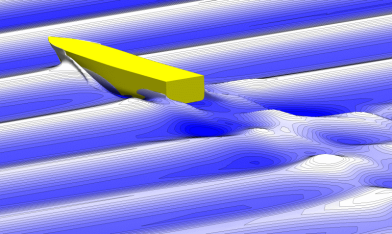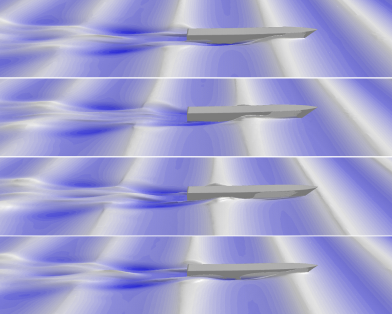The use of numerical methods offers many opportunities to examine ships at sea. The SVA can use the program system UTHLANDE or RANSE Method depending on the application. UTHLANDE provides the ability to perform seaway calculations based on linear and non-linear strip method. Using this method, monohulls and catamarans can be studied over a wide range of applications and short- and long-term statistics can be calculated. For special cases or the simulation of non-linear applications, RANSE Method (ANSYS Fluent) is used.
With numerical calculations, issues can be examined in terms of added resistance or the acceleration and motion behavior of ships. Added resistance at sea is an essential aspect in order to determine power requirements and operating costs of vessels correctly. The motion behaviour at sea, however, is an essential aspect of comfort and determines the operating limits of ships.
The numerical seaway simulations with RANSE procedures include the following applications:
- Seaway from any direction, stationary and in motion
- Calculation of regular and irregular sea states, with the focus on the calculation of regular seaway
- Determination of the added resistance
- Determination of accelerations

